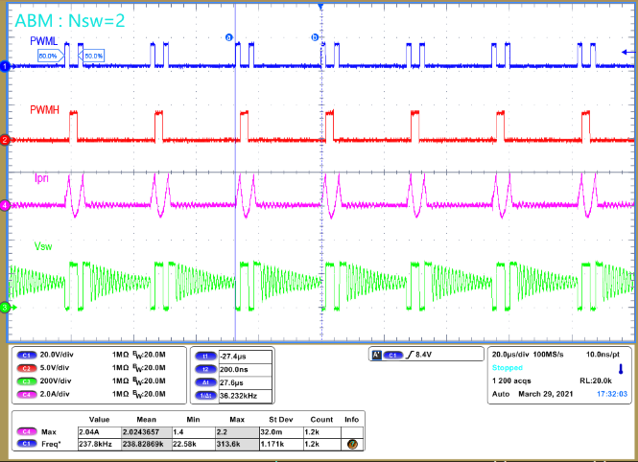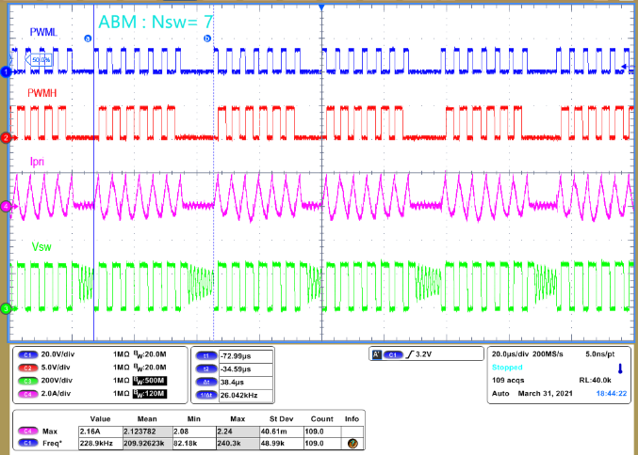SLUAAF9 September 2021 UCC28782
- Trademarks
- 1 Initial Board Visual Inspection and Start-up Check
- 2 Typical System Operating Waveforms
- 3Typical System Protection Waveforms
- 4Common Issues and Solutions
- 5References
2.5 ABM Mode
At ABM mode, the peak current is clamped at VCST(BUR)/Rcs, PWMH is enabled, so Zero-Voltage Switching (ZVS) is achieved except for the first switching cycle. The number of PWML pulses (NSW) is modulated to ensure burst frequency stays above 25khz. As load increases, burst frequency becomes higher and reaches to the high-level burst frequency threshold fBUR(UP), the ABM loop commands NSW to be increased by one pulse to push burst frequency fBUR below fBUR(UP). Additional details can be found in UCC28782 data sheet section 8.4.6.
 Figure 2-5 ABM Mode PWML Pulse
NSW=2
Figure 2-5 ABM Mode PWML Pulse
NSW=2 Figure 2-6 ABM Mode PWML Pulse
NSW=7
Figure 2-6 ABM Mode PWML Pulse
NSW=7